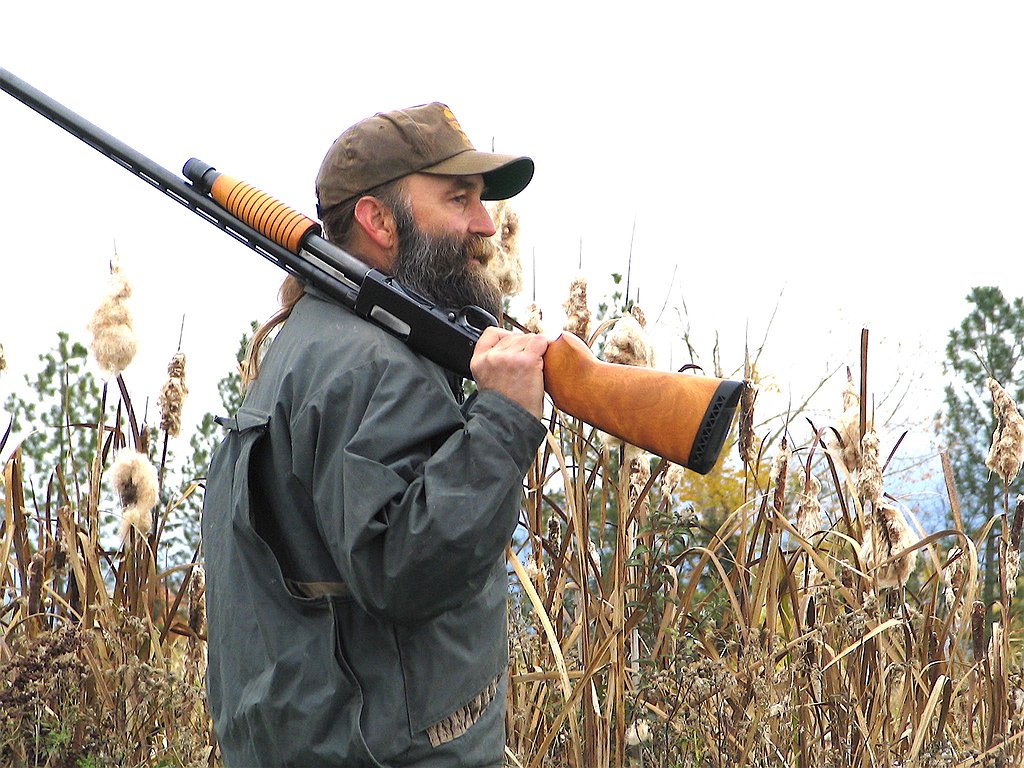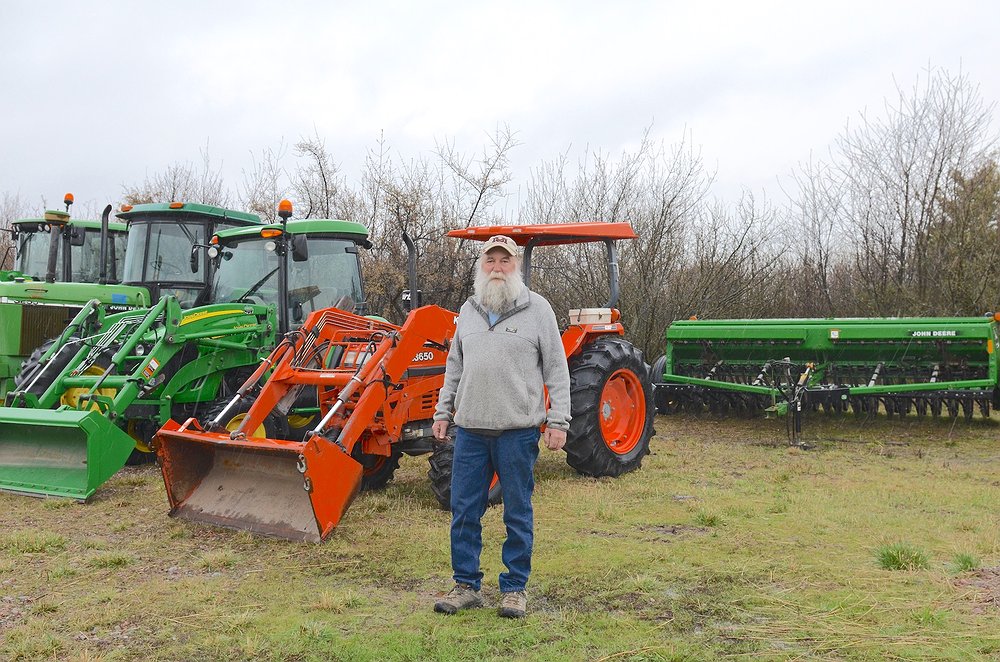Lake County's John Grant leaves a legacy defined by birds, land and water
It was appropriate that a soft spring drizzle enveloped the Mission Valley enfolding Ninepipe Reservoir and the surrounding Wildlife Management Area in a green envelope when friends, neighbors and colleagues gathered to celebrate the legacy of legacy of retired wildlife-area manager John Grant and his 33-year effort to tend and protect a vast swath of critical wildlife habitat.
Jim Williams, who retired as Region 1 supervisor for Montana Fish, Wildlife and Parks in 2022, worked with Grant for nearly 25 years.
“John had what was as close to a Sand County Almanac-type job as anyone in the country,” he said recently. “He had his hands in the soil, he had his feet on the soil, he had his hands in lots of vegetation and restoration projects.”
And perhaps most significantly, he helped grow the state lands surrounding Ninepipe south of Ronan by more than 1,200 acres.
“Collectively all residents, all non-residents, all visitors — anybody when they drive through the Mission Valley — gets to benefit from seeing that open space between Ronan and St. Ignatius,” says Williams.
“Every single person in the Mission Valley can look at and enjoy the products from his work, whether it’s open space, wildlife populations or access, and a lot of folks don’t know it,” he added.
When John Grant first set foot in the Ninepipe Wildlife Management Area in 1990, he was committing himself to tend one of the gems of the Montana Fish, Wildlife and Parks system.
He retired in December, although this spring found him still keeping a watchful eye on the FWP headquarters east of Charlo as the state recruits his successor.
“One of my favorite things was the creation, development and restoration of wetlands,” he said during a recent interview. “There was just something special about turning a dry site into a flourishing oasis for wildlife.”
The patchwork of parcels surrounding Ninepipe National Wildlife Refuge provides essential habitat and protection to ring-necked pheasants, Hungarian partridges, migratory waterfowl and other bird and animal species while enticing bird hunters and bird watchers alike.
The management area was established in 1953 — long before Grant came on board to manage it. Since then, the area has gradually expanded to its present size of around 4,200 acres. It’s part of a much larger configuration of lands owned by the federal government, Confederated Salish and Kootenai Tribes, and local landowners who have set up conservation easements to limit development and, in many cases, guarantee public access.
FOR GRANT, the job was an ever-challenging and changing blend of farming and wildlife biology. His tools were an arsenal of farm equipment, an understanding of how water flows across a landscape of fields and potholes, leftover from the retreat of Lake Missoula, and an appreciation for the appetites and breeding habits of his target species, pheasants.
“Almost everything else benefits from what we do for pheasants,” he said, including Hungarian partridge, ducks, geese, and increasingly deer and bear.
Pheasants live here year-round, so they need feed and cover to flourish. But cultivating pheasant habitat isn’t the same as growing grain or alfalfa. Instead of planting large, contiguous areas, irrigated with sprinklers, Grant and his summer crews grew 300 acres of grain, dappled around 60 fields, and relied on ditches and small earthen dams to direct water across the landscape.
Those 300 acres of grain could have been raised in three fields, he said. However, the more labor-intensive management strategy isn’t about feeding humans or livestock. It’s designed, instead, to feed birds and wildlife, while providing adjacent cover, especially during the breeding season.
He earned a master’s degree in wildlife biology from the University of Montana, working with well-known biologist Joe Ball, “who did seminal work in the Mission Valley.”
At the same time, Grant was willing to take on the hard work of farming, including maintenance and repair of a fleet of tractors and cultivation tools, planting and irrigating the patchwork of fields, and the endless chore of weed management. At 4,500 acres, it’s probably among the largest agricultural operations remaining in the Mission Valley.
It was never an easy job, and Grant says there’s no simple recipe for success.
“There's so much still to learn about all the ecological aspects of the soil, the water, the different vegetation, and how the wildlife interacts with it,” he says.
In fact, in the wake of his retirement, Grant’s job was split in two. A maintenance team supervisor comes on board this spring to take over the agricultural duties while FWP biologists will continue to monitor the species that flourish there.
A THIRD aspect of Grant’s work was that of community engagement and outreach. During the 33 years he spent on the state lands surrounding Ninepipe, he worked closely with his counterparts in the Confederated Salish and Kootenai Tribes Natural Resources Division and the U.S. Fish and Wildlife Service, which manages Ninepipe Wildlife Refuge.
He also cultivated relationships with community partners, including Ducks Unlimited and Pheasants Forever. Grant speculates that his own passion for hunting not only helped him understand the habitat needs of pheasants, but gave him credibility with those organizations dedicated to increasing their numbers.
He attended all meetings of the Flathead Reservation Fish and Wildlife Board, a joint state and tribal management board that develops hunting and fishing regulations for non-tribal members on the reservation, and helped organize youth and community events.
And, he was tenacious about adding to the repository of state lands in the area. When he came on board, the Wildlife Management Area encompassed about 3,000 acres. During his tenure, the state purchased approximately 1,200 acres, creating a patchwork of nearly 40 different parcels, adding up to around 4,200 acres.
When a prized parcel came up for sale, “he used to bug me relentlessly,” Williams says. “He’d wear me down on every single one of them.”
“Think about the crush of humanity that arrived in [the] Rockies, fleeing the coronavirus, buying land sight unseen,” Williams said. “Think about that land rush and how much of that valley would have been developed had collectively, the Tribes, the state and the federal government not picked up those lands for conservation areas.”
“When he takes people out, he’ll point to the land, point to the water, point to the birds,” Williams said. “Those projects that John did are permanent — they’ll be here after we’re all gone.”






